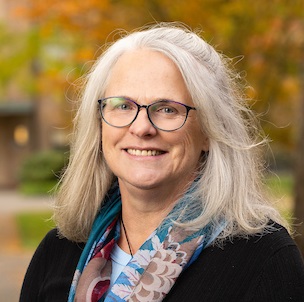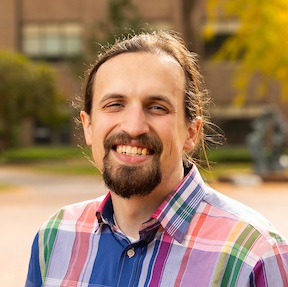Page 10 • (1,128 results in 0.011 seconds)
-
Biology Courses Take the following two required introductory biology courses: BIOL 225: Molecules, Cells and Organisms BIOL 226: Genes, Evolution, Diversity and Ecology You might also consider some
transferring to PLU, we recommend that you consult the following interactive equivalency guide to ensure that you are taking the correct courses for your intended major. For example, BIOL 211, 212 and 213 at Pierce College in Puyallup is equivalent to BIOL 225 and 226 at PLU.Biology Courses Take the following two required introductory biology courses: BIOL 225: Molecules, Cells and Organisms BIOL 226: Genes, Evolution, Diversity and Ecology You might also consider some of the following upper division
-
Biology Courses Take the following two required introductory biology courses: BIOL 225: Molecules, Cells and Organisms BIOL 226: Genes, Evolution, Diversity and Ecology You might also consider some
transferring to PLU, we recommend that you consult the following interactive equivalency guide to ensure that you are taking the correct courses for your intended major. For example, BIOL 211, 212 and 213 at Pierce College in Puyallup is equivalent to BIOL 225 and 226 at PLU.Biology Courses Take the following two required introductory biology courses: BIOL 225: Molecules, Cells and Organisms BIOL 226: Genes, Evolution, Diversity and Ecology You might also consider some of the following upper division
-
Biology Courses Take the following two introductory biology courses: BIOL 225: Molecules, Cells and Organisms BIOL 226: Genes, Evolution, Diversity and Ecology Many programs require some of the upper
Pre-Pharm Coursework & ExperienceThe coursework below satisfies the required and recommended courses for admission to pharmacy school. Note this represents general guidelines and requirements may vary from one school to the next. The prerequisites for grad schools in Washington: University of Washington School of Pharmacy Washington State University College of Pharmacy Here is a full list of Pharmacy programs and their requirements.Biology Courses Take the following two introductory biology
-
Biology Courses Take the following two introductory biology courses: BIOL 225: Molecules, Cells and Organisms BIOL 226: Genes, Evolution, Diversity and Ecology Many programs require some of the upper
Pre-Pharm Coursework & ExperienceThe coursework below satisfies the required and recommended courses for admission to pharmacy school. Note this represents general guidelines and requirements may vary from one school to the next. The prerequisites for grad schools in Washington: University of Washington School of Pharmacy Washington State University College of Pharmacy Here is a full list of Pharmacy programs and their requirements.Biology Courses Take the following two introductory biology
-

Associate Professor of Biology and marine ecologist | TEDxTacoma | Michael Behrens is Associate Professor of Biology and a marine ecologist at Pacific Lutheran University in Tacoma, Washington. He received his Ph.D.
Michael Behrens Associate Professor of Biology and marine ecologist Office Location:null Website: https://sites.google.com/a/plu.edu/behrens-lab/ Professional Biography Education Ph.D., Ecology, Evolution and Marine Biology, University of California, Santa Barbara, 2005 M.A., Ecology, Evolution and Marine Biology, University of California, Santa Barbara, 2003 B.S., Biology, Cal Poly at San Luis Obispo, 1996 Areas of Emphasis or Expertise Ecology Evolution Marine Biology Biography Michael
-
Lab Manager | Department of Biology | harrisaj@plu.edu | 253-535-7781
Amanda Harris Lab Manager Phone: 253-535-7781 Email: harrisaj@plu.edu Office Location: Rieke Science
Office HoursMonday - Thursday: 8:30 am - 5:00 pmFri: 8:30 am - 5:00 pm -

Professor of Biology | Environmental Studies | smith@plu.edu | 253-535-7307
Julie Smith Professor of Biology Phone: 253-535-7307 Email: smith@plu.edu Office Location: Rieke Science Center - 150 Professional Education Ph.D., Ecology and Evolutionary Biology, New Mexico State University, 2005 B.A., Biology and English, Saint Ambrose University, 1994 Areas of Emphasis or Expertise Behavioral Ecology Selected Articles Julie W. Smith, Trevor Fetz, Monika Shea, Craig W. Benkman. "Nest-site selection by Cassia Crossbills and management implications." Journal of Field
Area of Emphasis/Expertise -

Professor of Biology | International Honors | ellardma@plu.edu | 253-535-7357
Mary Ellard-Ivey Professor of Biology she/her/hers Phone: 253-535-7357 Email: ellardma@plu.edu Office Location: Rieke Science Center - 144 Professional Education Ph.D., Molecular Biology, University of British Columbia, 1994 M.S., Botany, University College Dublin, 1988 B.S., Botany, University College Dublin, 1987 Areas of Emphasis or Expertise Plant responses to the environment Selected Presentations Department of Botany and Plant Pathology, A Passion for Pedagogy, University of Oregon
Area of Emphasis/Expertise -
PLU Resident Instructor of Biology Michelle Crites gives a tour of the newly renovated anatomy and physiology lab in the Rieke Science Center. Learn more about the PLU Department of Biology.
Campus Tour: PLU’s newly renovated anatomy and physiology lab Posted by: Zach Powers / January 30, 2023 January 30, 2023 PLU Resident Instructor of Biology Michelle Crites gives a tour of the newly renovated anatomy and physiology lab in the Rieke Science Center. Learn more about the PLU Department of Biology. Read Previous Uncomfortable Truths: Introduction to Holocaust and Genocide Studies class examines the past to change the future Read Next PLU’s new anatomy and physiology lab is the first
-

Visiting Assistant Professor | Department of Biology | cmschiller@plu.edu | 253-535-7004
Chris Schiller Visiting Assistant Professor he/him Phone: 253-535-7004 Email: cmschiller@plu.edu Off
Office HoursM & W: 9:10 am - 11:30 amFri: 12:30 pm - 1:30 pmMon - Fri: -Area of Emphasis/Expertise
Do you have any feedback for us? If so, feel free to use our Feedback Form.


